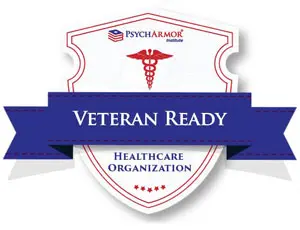Transgender Day of Remembrance 2019

Transgender Day of Remembrance, November 20th is the premiere event of Trans Awareness Week running from November 12th – 19th, 2018. Transgender Day of Remembrance has been recognized since 1999, one year after the murder of Rita Hester. What started out as an online campaign to remember those lost to transphobic violence is now an international annual day of observance. Transgender Day of Remembrance honors the memories of the transgender lives lost to hate, remembers the impact they left, and advocates for a more accepting future.
Despite constant federal pushbacks, societal backlash, and outright rejection, the transgender community has remained resilient. 2017 was the deadliest year for transgender people living in America. Neither fear nor hate has compelled the transgender community into silence. The voice of the transgender community is louder than ever, thanks to opportunities such as Transgender Day of Remembrance. While the public has attempted to censor the transgender community through misrepresentation and maltreatment, they have continued to fight for justice. Every American regardless of age, race, or sexual orientation deserves basic rights to freedom and security.
40% of transgender adults and nearly half of transgender teens have attempted suicide. The prejudice, harassment, and violence against the transgender community is indefensible. Speaking out and being an ally to the transgender community is the best way to help. If you become socially aware, others will follow your influence. Spread awareness and understanding of the unique challenges those in the LGBTQ community face. This is what Transgender Day of Remembrance is all about. Be kind. Be sensitive. Never use quotation marks when referring to someone’s chosen name or pronoun. Ask what pronouns people prefer, especially if you are unsure.
Many acts of violence against transgender people go unreported or misreported. Inaccurate reporting makes it difficult to calculate exactly how many transgender people are lost each year due to various acts of hate. Misinterpreting this information leads others to believe it is acceptable and continues to distance society from growing more empathetic. When reporting, there is a difference between presenting contending sides and generating vulgar dialogue. To obtain the most accurate information, reach out to the families of transphobic hate crime victims.
Resources:
Transequality.org – National Center for Transgender Equality
Apa.org/pi/lgbt/resources/transgender-day.aspx – An online CEU course on affirmative approaches to research, supervision, and clinical work in psychological practice with transgender and gender non-conforming clients.
Offensive words/ phrases and replacements:
Transgender – Instead use transgender people or transgender person is preferred.
Pre/ Post op – Transition is a better word to use.
Biologically or physically / male or female – A better way to express that phrase would be assigned or designated male or female at birth.
*Words to never use and have no replacements when referring to the transgender community – pretending, posing, masquerading, tranny, she-male, he-she, it, shim.
Definitions:
Gender identity – A person’s internal deeply held sense of gender. Does not always match gender assigned at birth.
Gender expression – External manifestations of gender. Examples include name, preferred pronoun, clothes, and haircut.
Transgender – Umbrella term for people whose gender identity or expression differs from what is typically associated with their sex assigned at birth.
Trans – A shorthand for transgender/ transsexual. Sometimes inclusive for a wide variety of identities under the transgender umbrella.
Gender non-conforming – Term used to describe some people whose gender expression is different from conventional expectations of masculinity and femininity.
A lot has changed in the almost twenty years since the first Transgender Day of Remembrance Day. Transgender Day of Remembrance was celebrated in 185 cities across the world in 2016, most likely to expand this year. Cinema has seen unprecedented levels of transgender visibility in projects over the last decade. Over the last year, transgender crisis helplines have seen a major uptick in calls. While it is a shame so many people are in need, it is good they are reaching out. It is crucial to reduce the stigma against identifying as a transgender individual.
If you are interested in honoring Transgender Day of Remembrance, there are plenty of ways to help. The most common way is to hold a vigil where the names of those taken too soon are read aloud. Reading the names allows their memory to live on, and their story to continue to be told. Contact your local LGBTQ center for more information on events they may be hosting during Trans Awareness Week. Additional ways to commemorate Transgender Day of Remembrance are spoken word sessions, art exhibits, discussion panels, and documenting the legacies of those who were or are currently making the necessary change to reduce the stigma of identifying as a transgender individual.
Seabrook is a proud partner of the LGBTQ community. If you or someone you know is suffering from addiction do not hesitate to reach out. To learn more about our multifaceted medical approach to alcohol and other drugs, including opiate detoxification, and our LGBTQ specific treatment program, call today: 856-455-7575.



